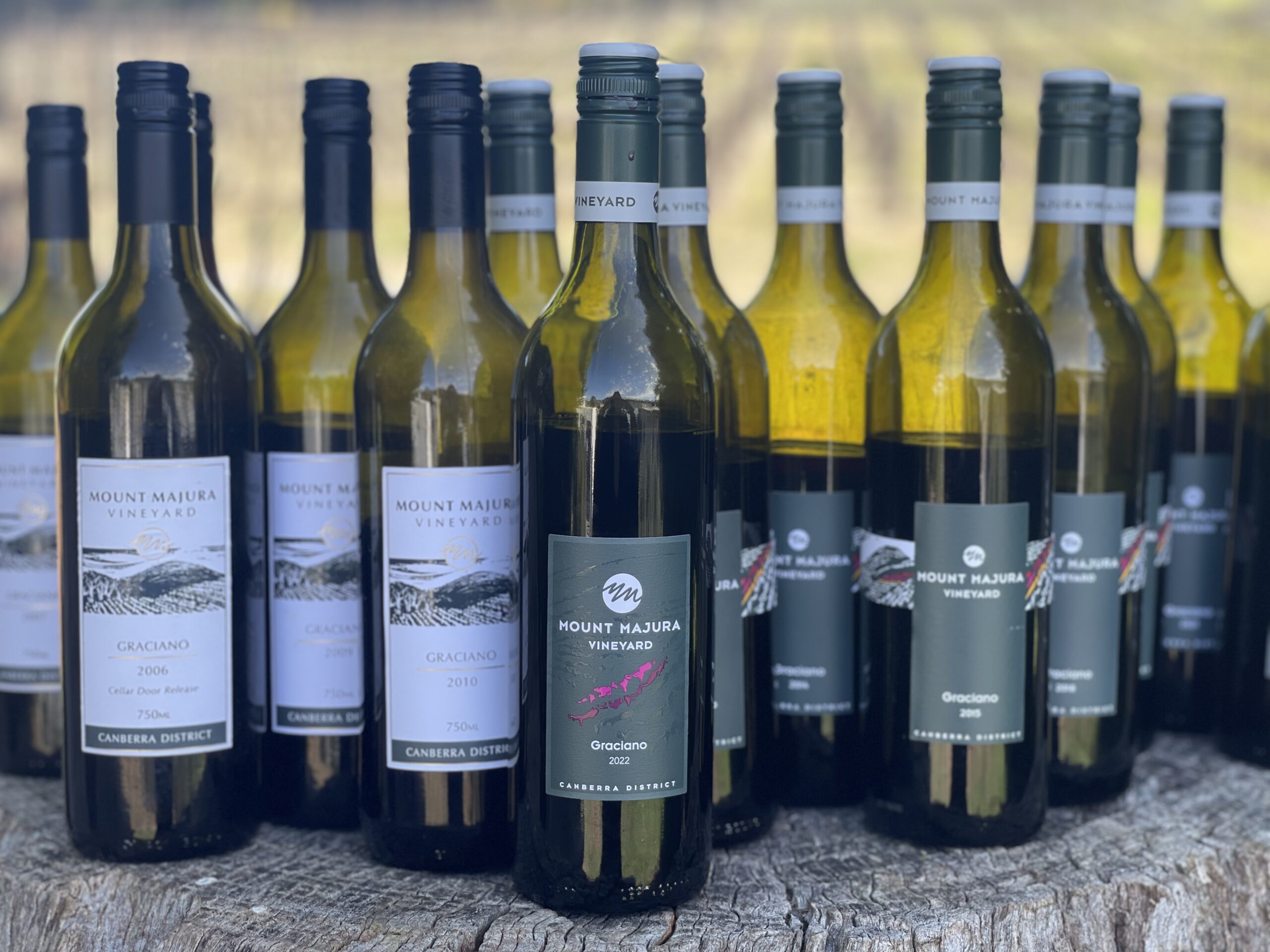“Canberra Winemakers Planting New Grape Varieties That Could Become The Red And White Wines Of The Future” James Vyver ABC Canberra
Canberra winemakers planting new grape varieties that could become the red and white wines of the future
-
By James Vyver
-
Topic:Viticulture
James Hopper is trying to find new grape varieties that suit the Canberra region as the climate warms. (ABC News: James Vyver)
As Canberra’s cool-climate wine region warms, viticulturalist James Hopper is planting new grape varieties that he hopes will produce the wines of the future.
Increasingly warmer weather can affect how grapes grow, when they’re harvested and crucially, how wines taste.
So, at Mount Majura Vineyard on the edge of the capital, he’s trialling grapes that can better cope with the effects of a changing climate.
“Albarino, we’ve also planted Mencia and Paraletta,” Mr Hopper said.
Albarino, also known as Alvarinho, is a white variety, while Menica and Paraletta are both reds.
All three come from Spain and parts of Portugal.
“We think they suit the climate, and they’re part of our strategy for future proofing,” Mr Hopper said.
The slightest shift in the final weeks of grape growth can make a big difference in the quality of a wine. (ABC News: James Vyver)
Things move slowly in viticulture. The new vines may take 20 years before they can produce commercial quantities of wine.
But Mr Hopper says the vineyard is planning ahead, even if it will be a while before he can drink a glass of Mencia and Paraletta.
“We’re trying to find new varieties that we think will be suitable for our region as it gets warmer with climate change,” he said.
Cool-climate Canberra not so cool
The Canberra wine district is considered cool climate and is best known for its European style Shiraz and Rieslings.
But that cool climate is warming, especially in spring.
“If we look at the last 20 years, we’ve also seen an increase between 1.3 and 1.7 degrees [Celsius] and that’s quite a lot in maximum temperatures,” Australian National University climatologist Janette Lindesay said.
Climatologist Janette Lindesay says summers are getting hotter and starting earlier. (ABC News: Nick Haggarty)
She’s collated Bureau of Meteorology data on spring weather in the capital.
“Temperatures that we used to associate with summer, maybe 50 or even 30 years ago, those temperatures are happening now in spring,” Professor Lindesay said.
“Effectively, summer has got longer, it’s starting earlier, and that means that plants are responding.
“They’re growing their leaves and fruit earlier and that means that winemakers have had to change what they’re doing.”
Albarino is one of the new varieties that have been planted at Mount Majura Vineyard. (ABC News: James Vyver)
Mr Hopper says this kind of data set matches with the changes in wine harvest at Mount Majura Vineyard.
“We’ve got data that shows over the last 20 years, we’ve seen greater than 30 days, maybe 40 days, shortening of the season for Chardonnay,” he said.
“We’re harvesting it up to 40 days earlier than we did when we first started.”
This change is known as ‘vintage advancement’ – the grapes being ready to pick earlier in autumn than the year before.
Mount Majura Vineyard has tracked the Chardonnay harvest shifting 1.5 days later per year since 2004.
Slightest changes having big impacts
The slightest shift in the final weeks of grape growth can make a big difference in the quality of a wine.
“If it gets too hot we see fast ripening and we end up with sugar accumulation and our acid drops out, but we don’t have flavour ripening as well,” Mr Hopper said.
The other problem caused by an earlier harvest is called ‘vintage compression’.
Australia’s wine season typically runs from October to April.
The growing, harvesting, crushing and fermenting of grapes must happen in that time period.
But as the harvest comes forward, the demand for essential winemaking resources like picking, processing and transportation all comes at the same time.
These new vines may take 20 years before they can produce commercial quantities of wine. (ABC News: James Vyver)
Canberra’s wine industry isn’t the only region being affected.
Research from industry body Wine Australia shows that all 71 of Australia’s wine regions must adapt to hotter conditions, with temperatures increasing by as much as 3C by 2100.
Wine Australia is also working with universities and governments to research which new varieties may be grown in the future.
At Mount Majura Vineyard, it’s been three years since the new varieties were planted.
Mr Hopper said more are planned for 2025 or 2026.
“That is part of the experimental ethos that we have here,” he said.
“So we’re going to continue to plant more new varieties to see how they suit our climate, and hopefully with great success.
“But only time will tell.”



